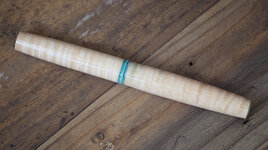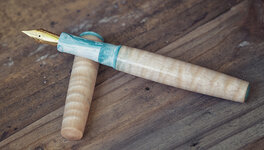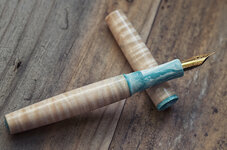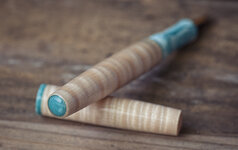Fred Bruche
Member
Another prototype for the "pour the resin in the blank" approach, not as wabi-sabi as the first attempt but a few details still need attention (i.e. resin is very very close to peaking through in some areas).
As I was working on it I also realized that this approach doesn't require any gluing, one less thing to buy or to worry about!
The chatoyance of the curly maple is strong but difficult to photograph.
Like last time, I feel there should be some contrasting ring to visually delineate the blank from the resin, that will get some attention on the next attempts
C&C welcome.




As I was working on it I also realized that this approach doesn't require any gluing, one less thing to buy or to worry about!
The chatoyance of the curly maple is strong but difficult to photograph.
Like last time, I feel there should be some contrasting ring to visually delineate the blank from the resin, that will get some attention on the next attempts
C&C welcome.





